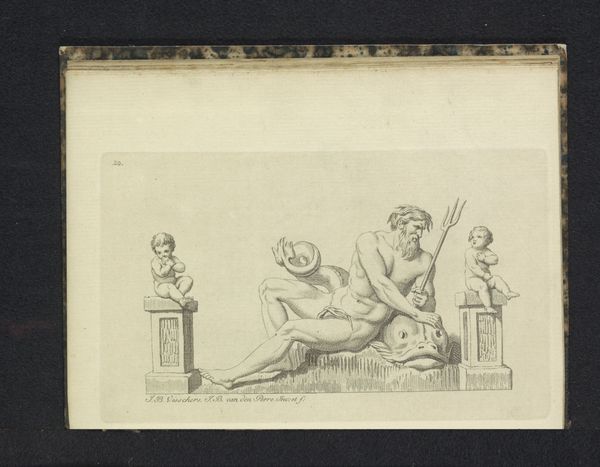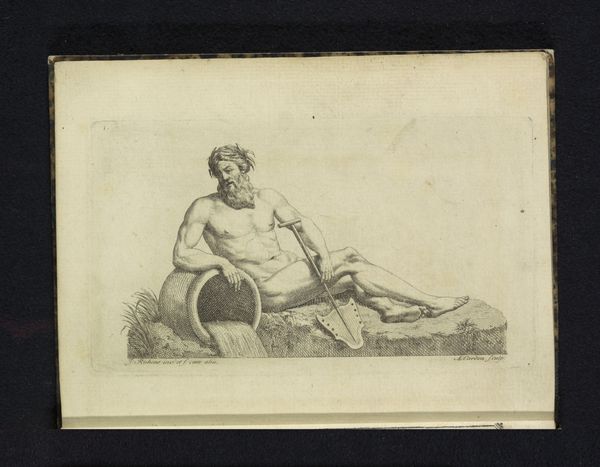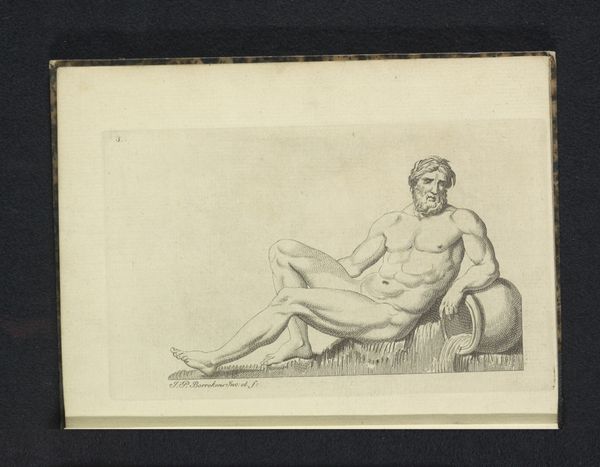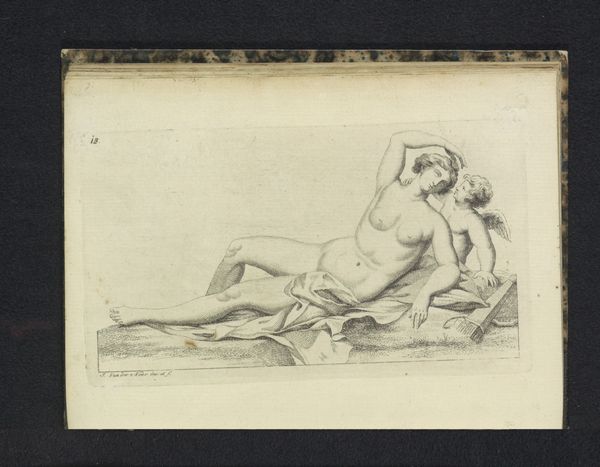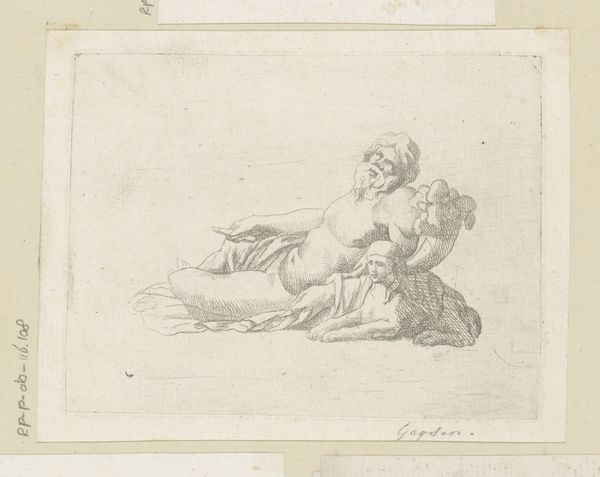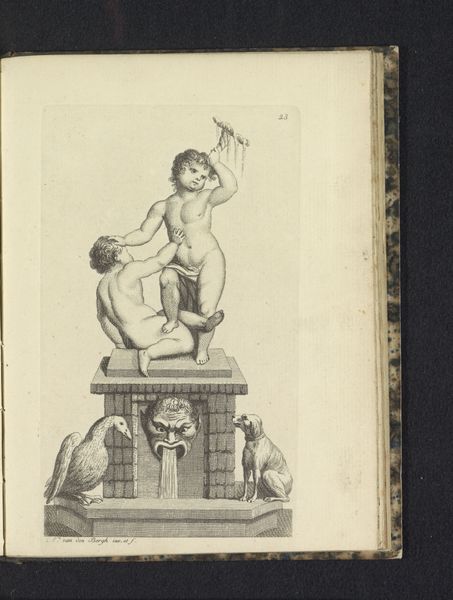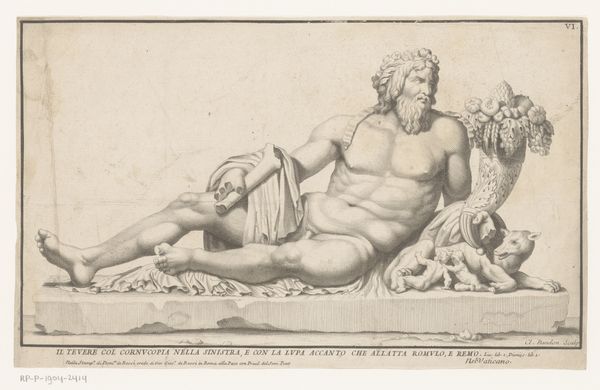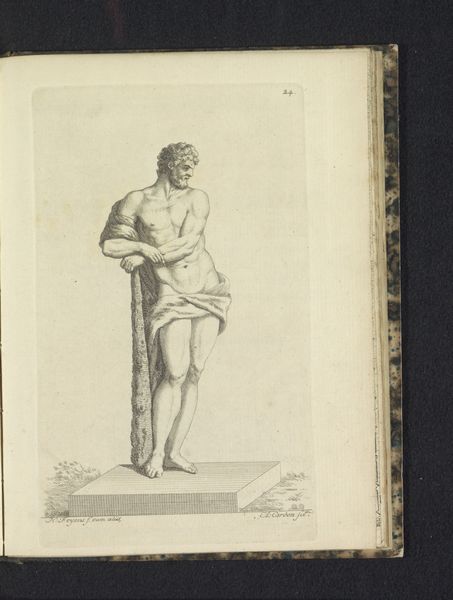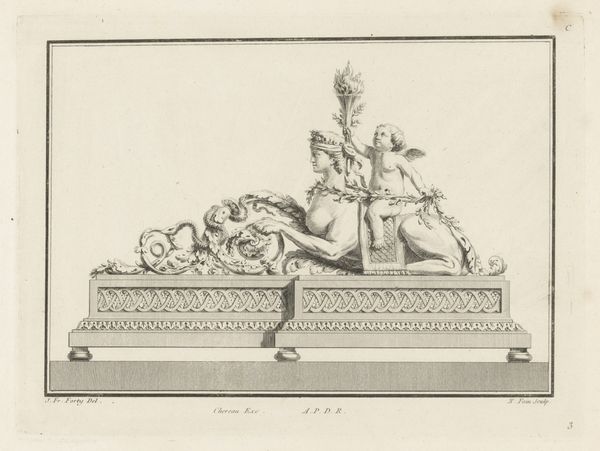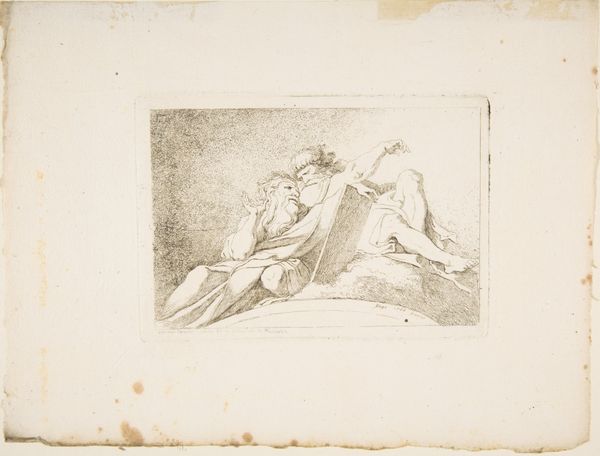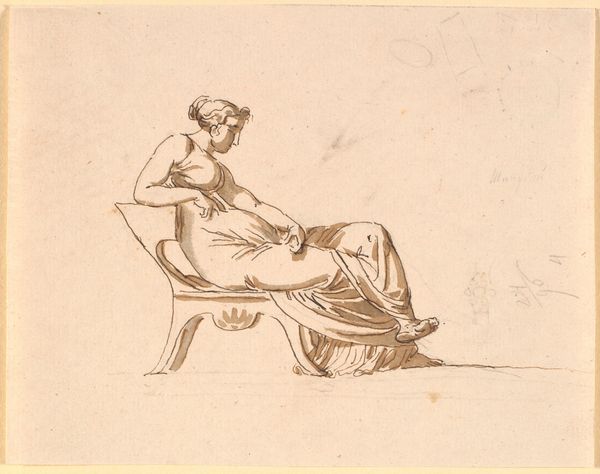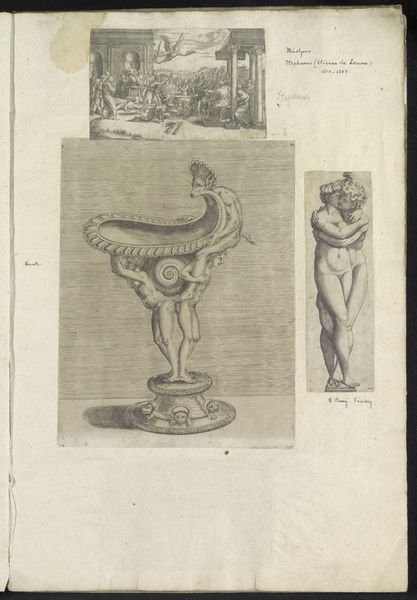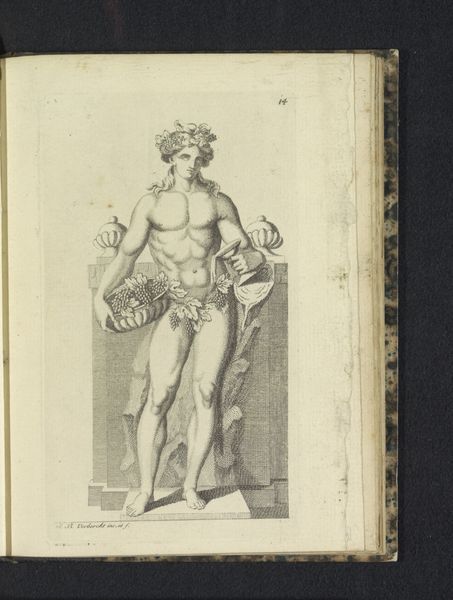
drawing, paper, ink, engraving
#
drawing
#
neoclacissism
#
allegory
#
sketch book
#
landscape
#
classical-realism
#
figuration
#
paper
#
ink
#
nude
#
engraving
Dimensions: height 95 mm, width 168 mm
Copyright: Rijks Museum: Open Domain
Editor: This is "Riviergod," a drawing by Antoine Alexandre Joseph Cardon made around 1772 or 1773, rendered in ink on paper. There’s a certain… coolness to this piece. The god is reclining, but it’s all very formal. What’s your read on it? Curator: The coolness, as you put it, stems from the Neoclassical style, heavily influenced by a renewed interest in classical antiquity during the 18th century. We see this fascination reflected in the idealized male figure, the allegorical subject matter, and even the architectural elements flanking the composition. Think about what's missing, too – any real sense of lived experience, of spontaneity. Instead, there's an emphasis on order and reason. Editor: So, this isn't just about showing a river god. What was Cardon trying to *say* by representing it this way? Curator: He's participating in a larger cultural project. This drawing, as an engraving, would have been easily reproduced and widely disseminated, shaping public perception. The idealization of the body, the reference to classical virtues…it all subtly reinforces the values and authority of the elite in that period. We can see it, too, in how figures like this become standardized, almost mass-produced in their image. Does that make sense? Editor: It does! So, while on the surface, it's a simple depiction of a mythological figure, it's really entangled in social and political currents. Kind of makes you look at it differently. Curator: Exactly. And this kind of art played a role in establishing cultural norms that continue to resonate today. By examining pieces like this, we start to understand how even seemingly innocuous images can wield considerable power. Editor: Wow, I had no idea there was so much hidden history in a drawing like this. Thanks for opening my eyes! Curator: My pleasure! It’s precisely this layered approach to art that allows us to reveal not only its aesthetic value but also its role in society.
Comments
No comments
Be the first to comment and join the conversation on the ultimate creative platform.
